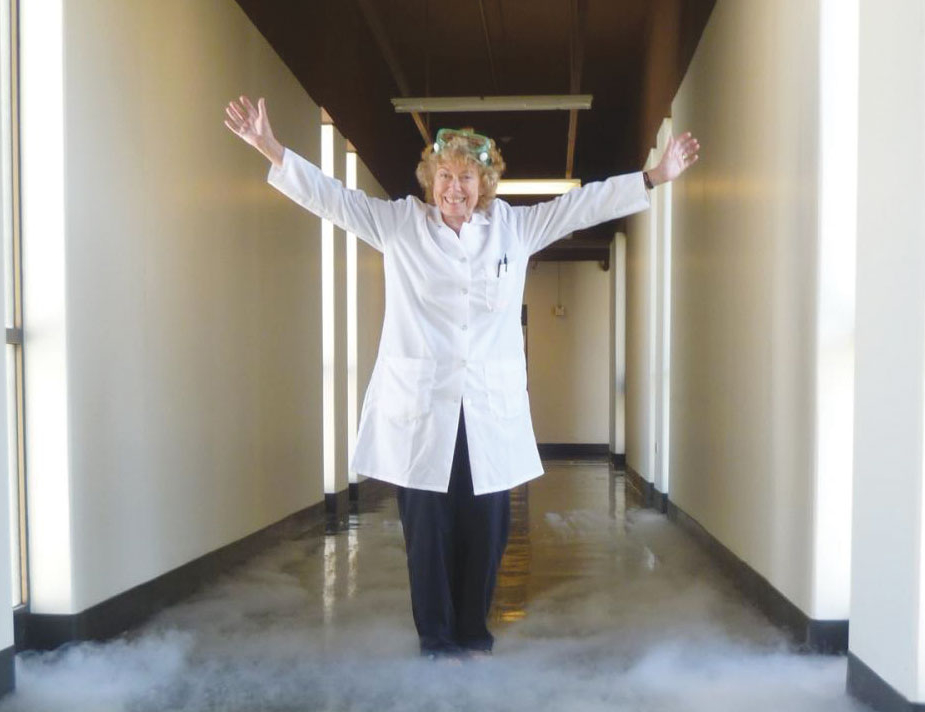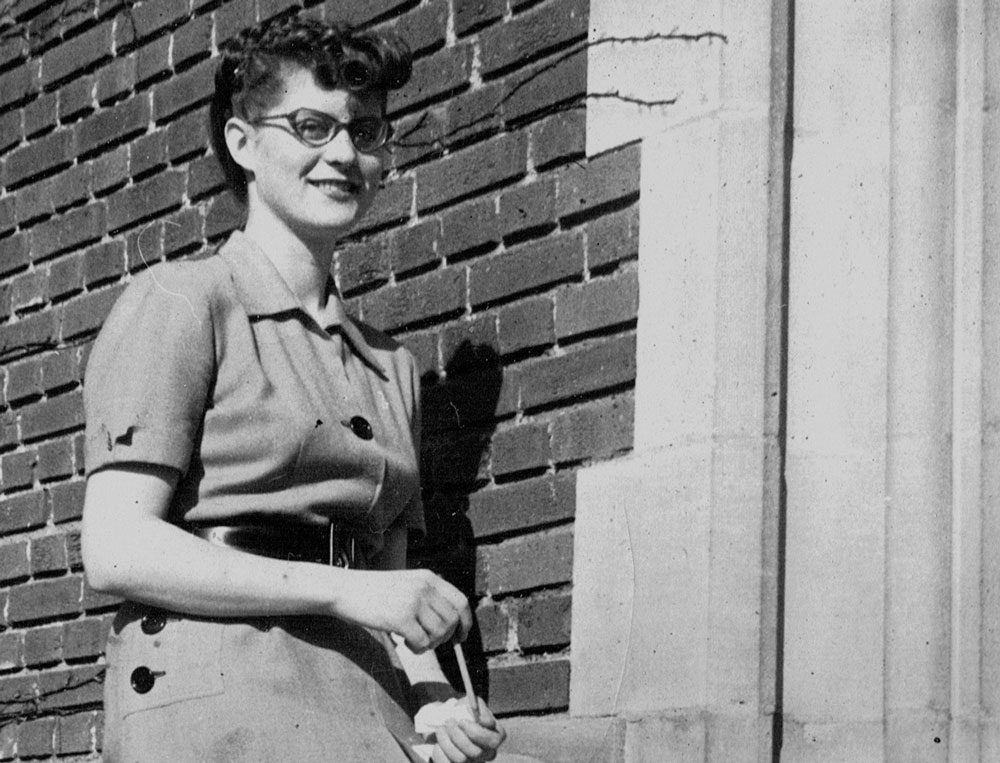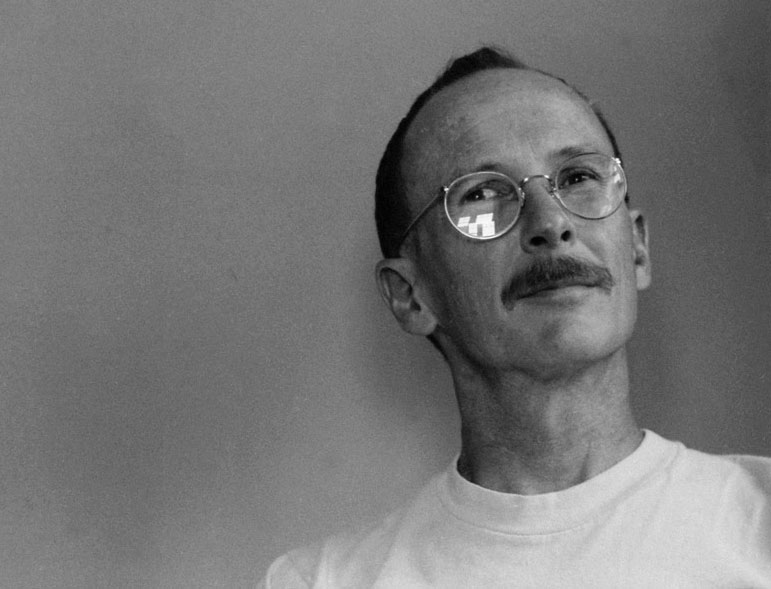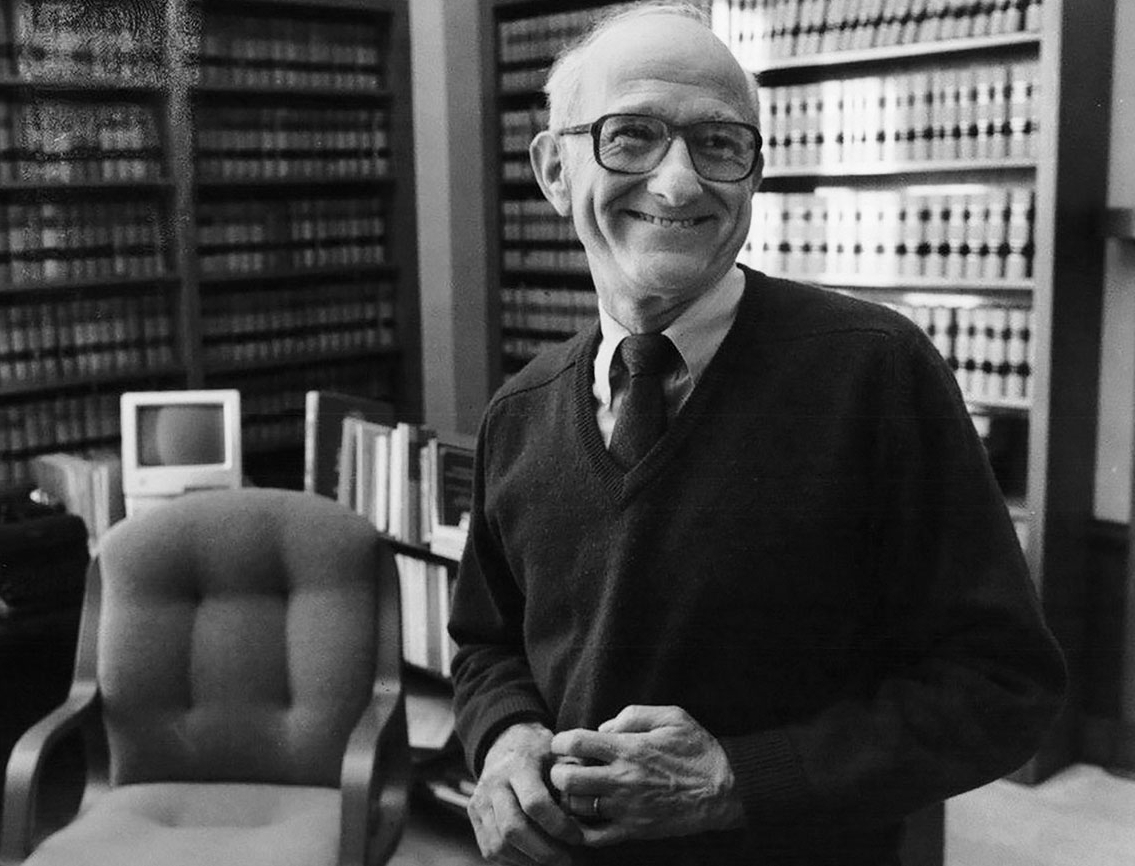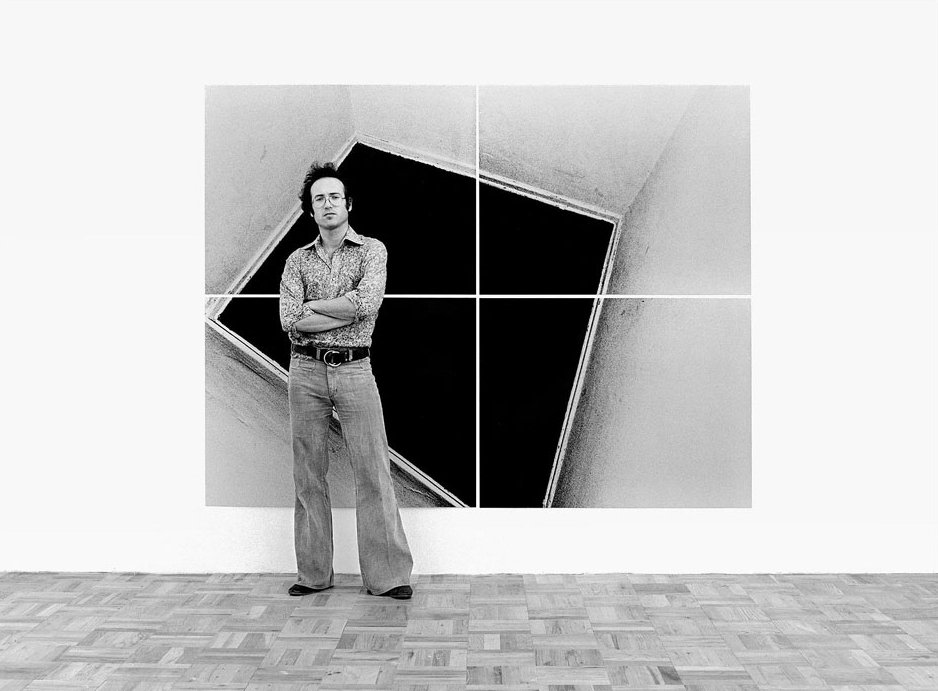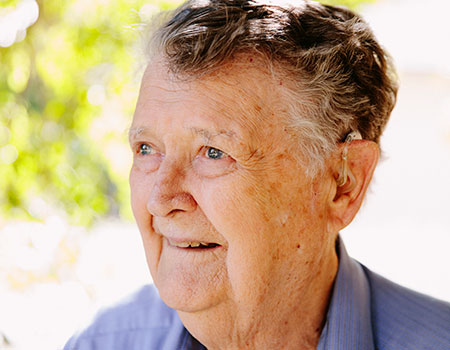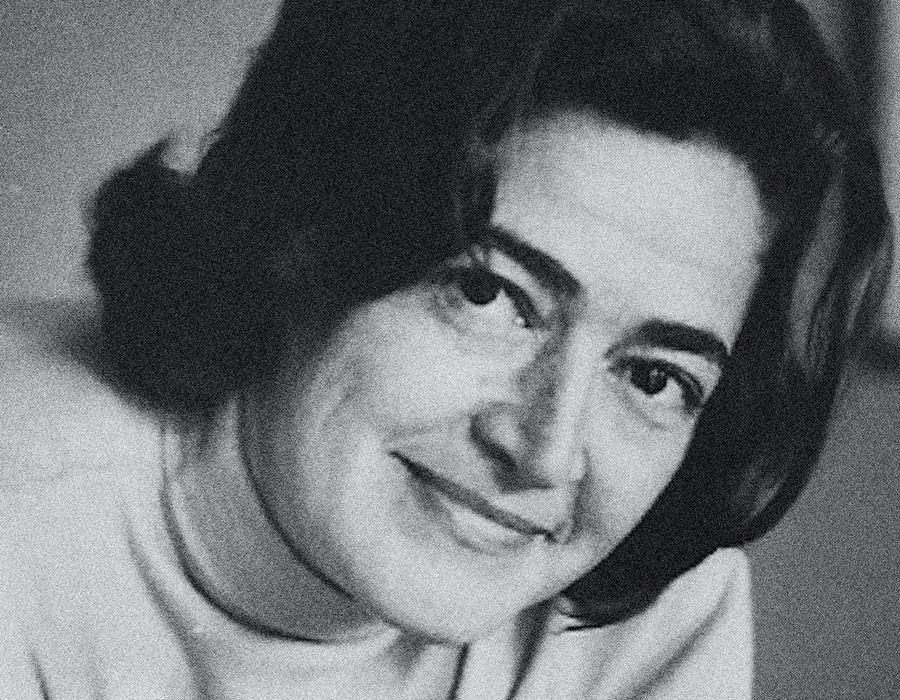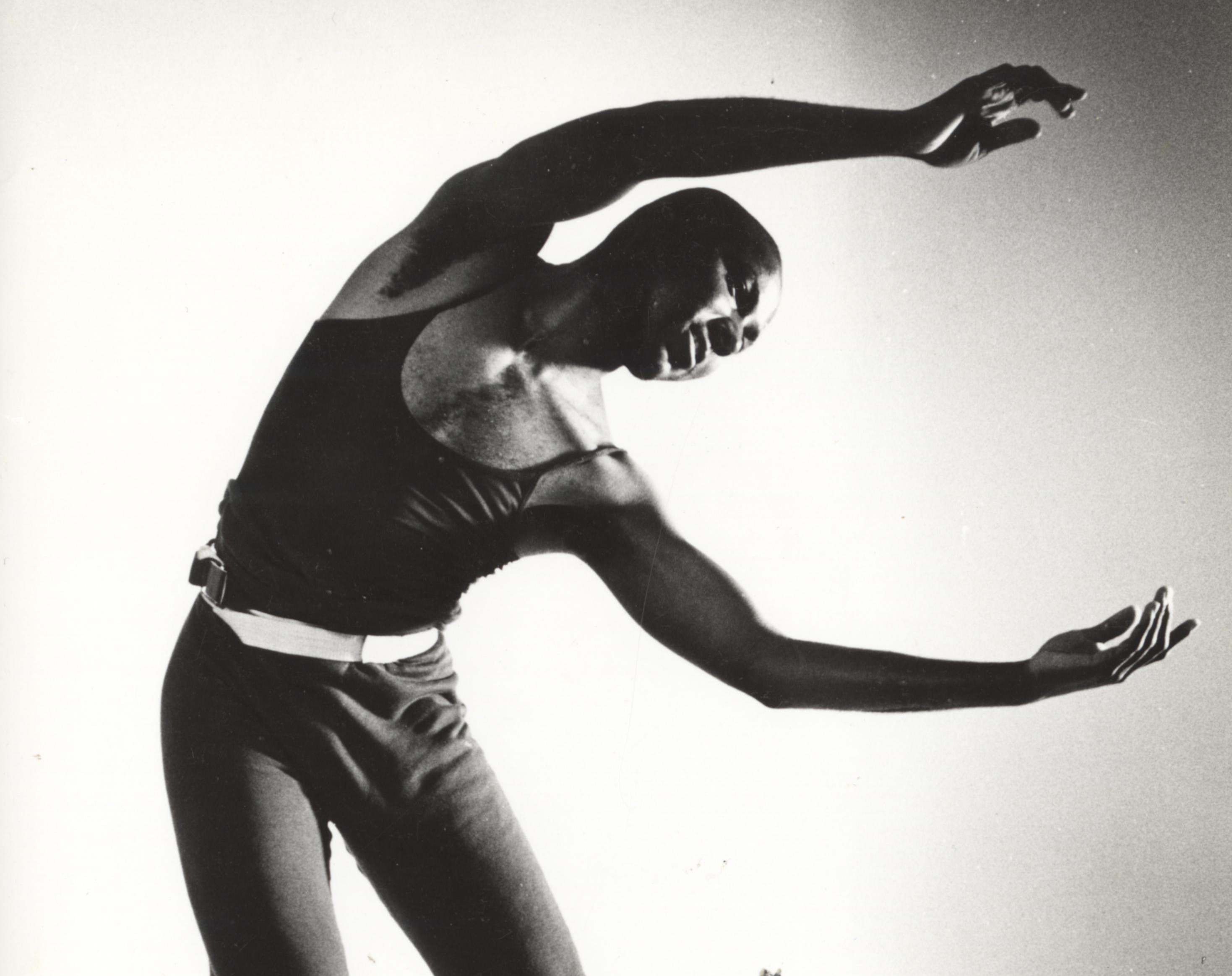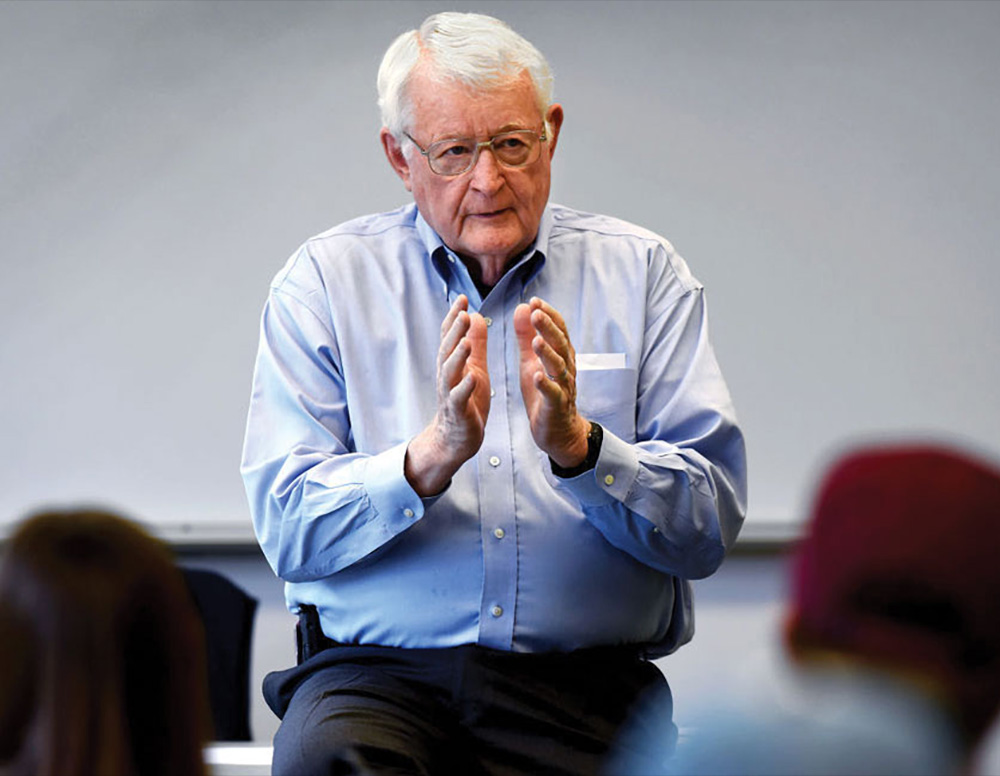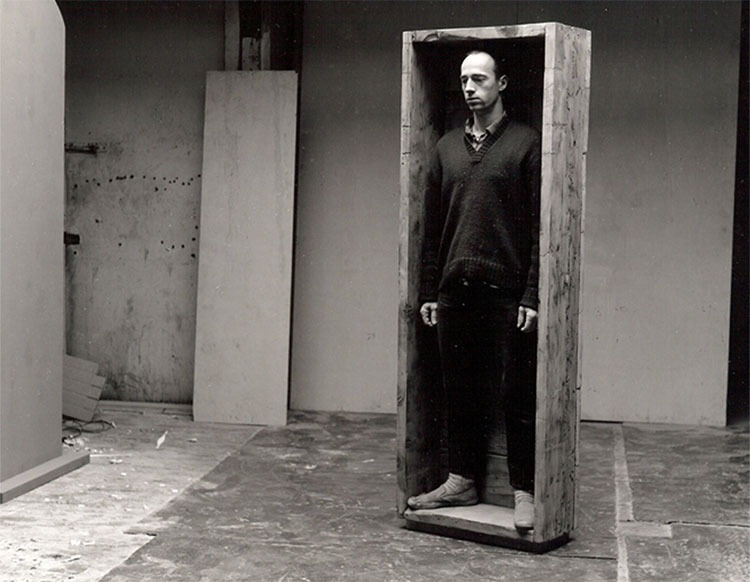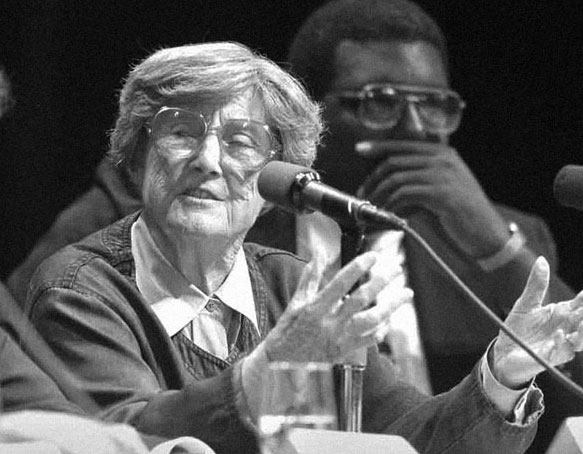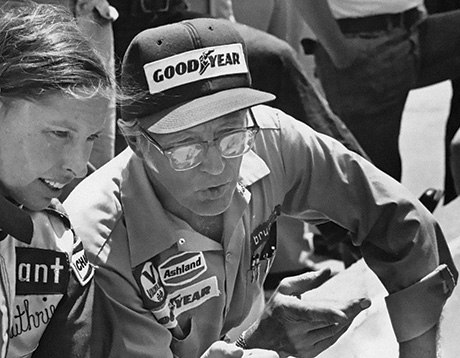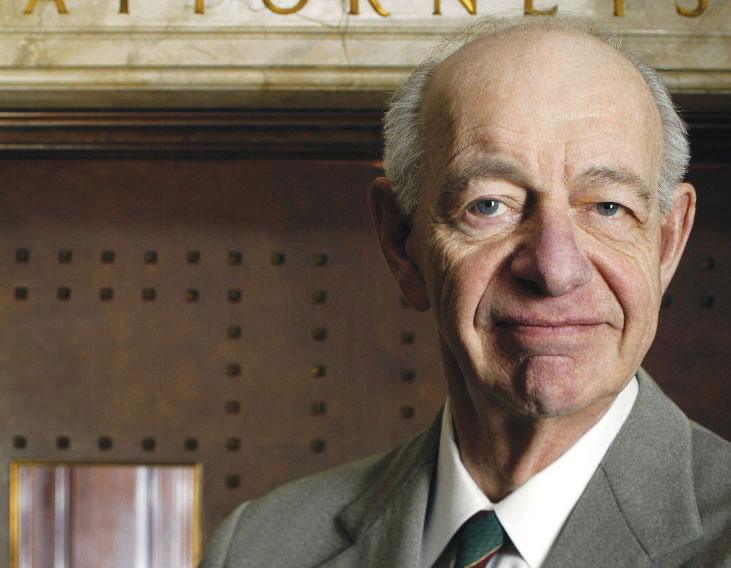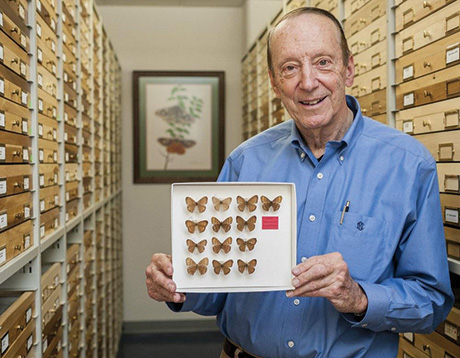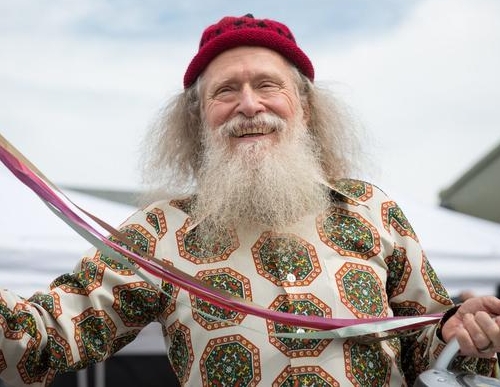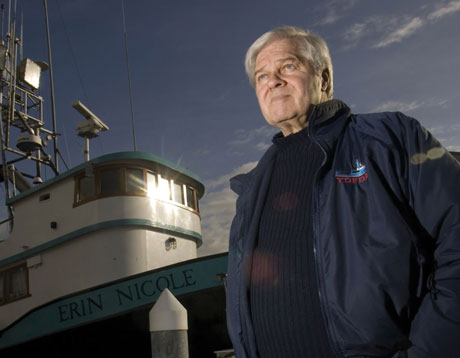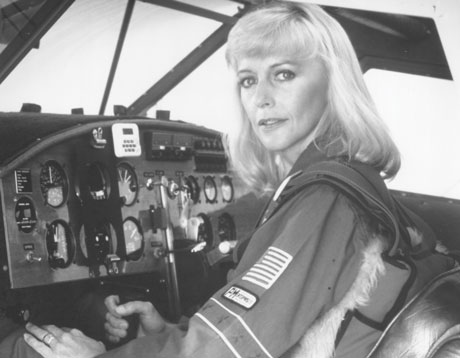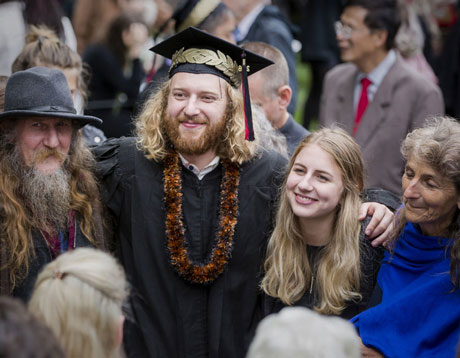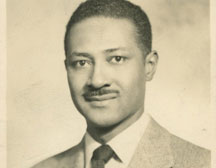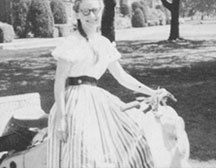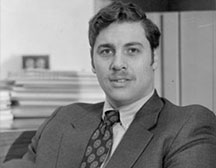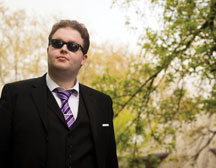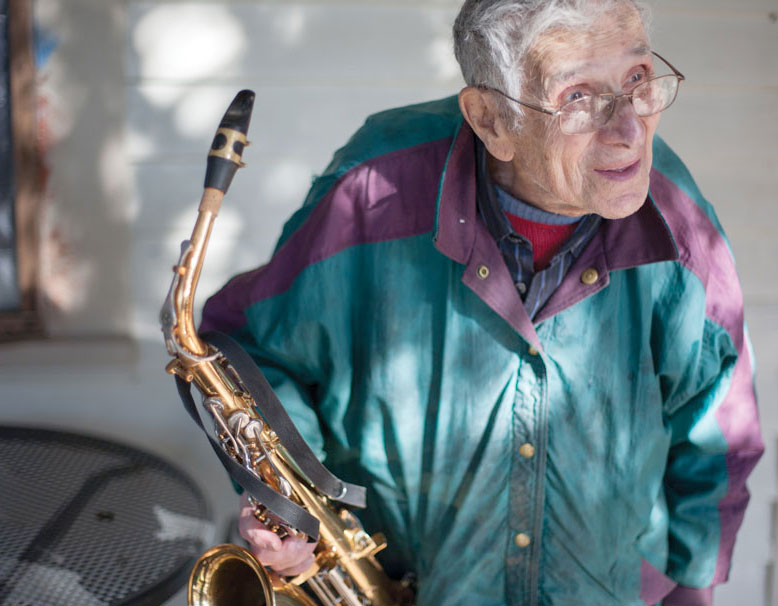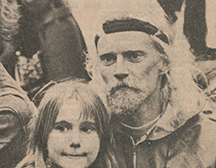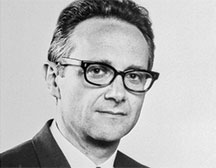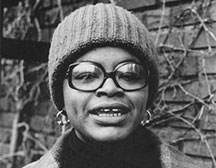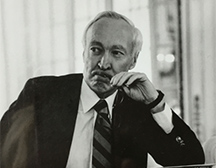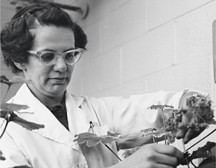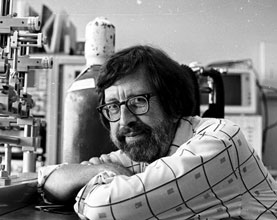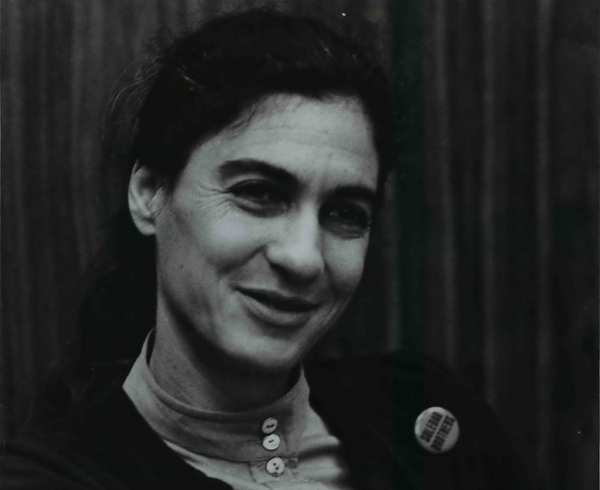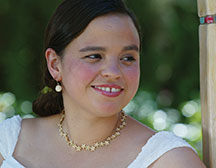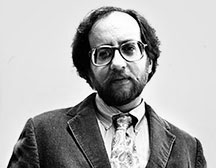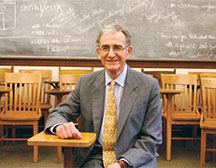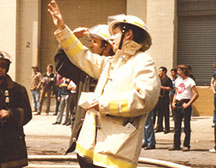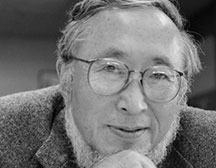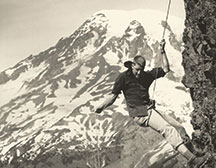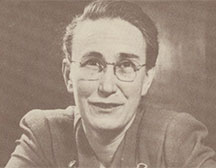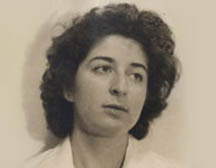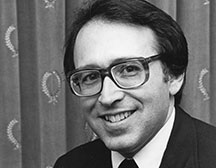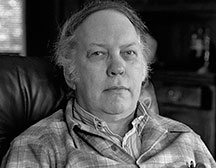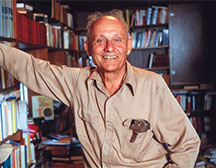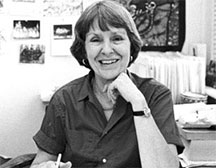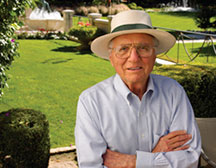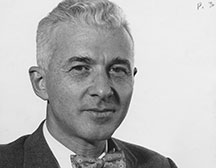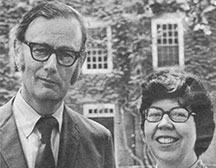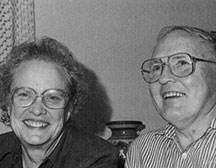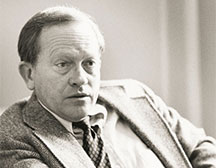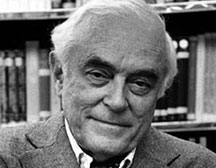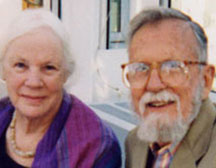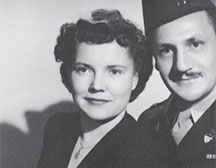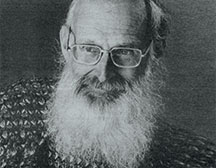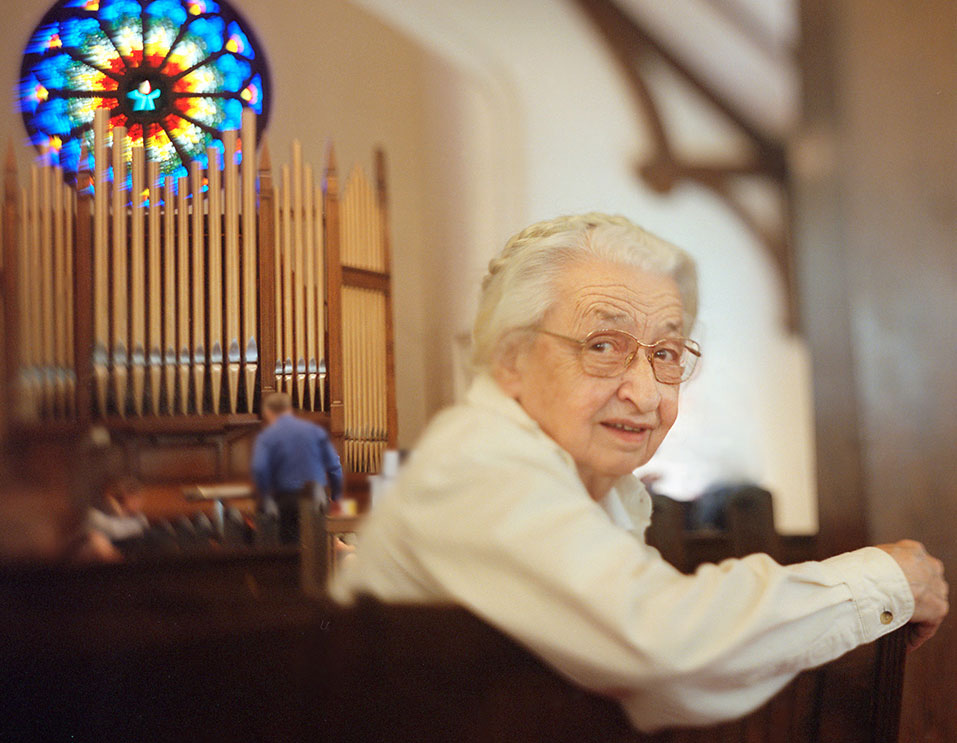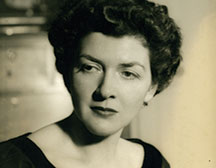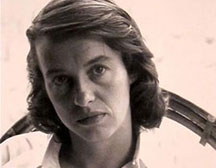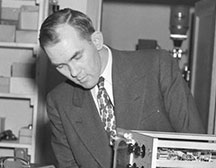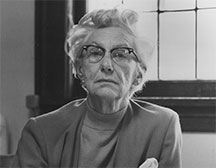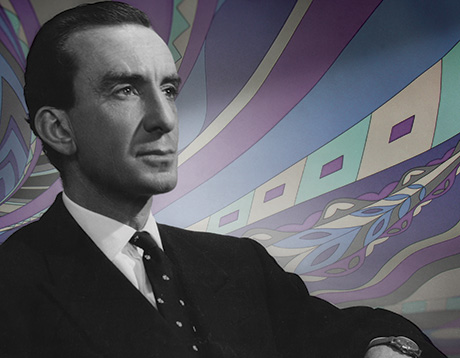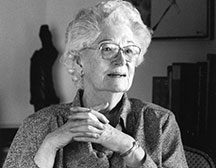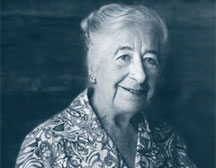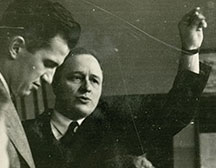Master of Letterforms, Keeper of the Faith
Prof. Robert Joseph Palladino
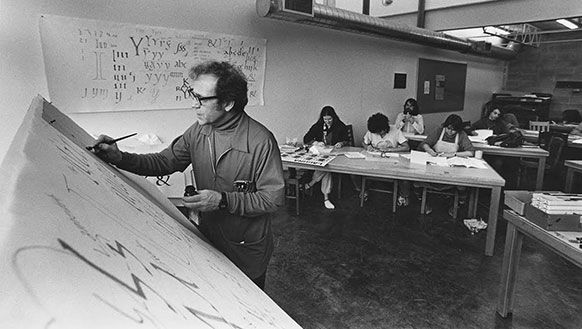
Father Robert Palladino, a vital force in Reed’s calligraphy tradition and mentor to many scholars of the letter—including a penniless dropout named Steve Jobs—died quietly at home in Sandy, Oregon. He was 83 years old.
A former Trappist monk, Father Palladino taught calligraphy from 1969 to 1984, guiding students on an intellectual voyage through the art and history of the letters of the alphabet with brush, pen, quill, and ink.
“Whenever you write, write something worth reading,” he told his students.
Born and raised in Albuquerque, New Mexico, the youngest of eight children, Palladino was cherished by a loving family, diverse in its heritage and strong in the Roman Catholic faith. His grandfather designed the St. Francis of Assisi Cathedral in Santa Fe. His father, a grocer, was the choirmaster at the parish church; his mother, a nurse, was the organist.
Albuquerque boasted a robust Italian community; he was schooled by Jesuits and immersed in music and art. He played ball and read the funnies, but he also was an altar server at the church. The spiritual communion he experienced in the sanctuary directed his search for a profession that would further his faith. Guided in that search by his priest, he made retreats at Our Lady of Guadalupe, the Trappist monastery then in Pecos. During these sessions, the beauty of Gregorian chant captivated him, as did the silence, simplicity, and farm work—the monks subsisted on the vegetables and fruits they grew.
After high school, he entered the monastery and began his life as a Cistercian of the Strict Observance. “Life in a cloistered monastery in those days was liturgical, scriptural, and contemplative, and I felt right at home,” he said. He joined the choir and began a 10-year course of study for ordination, which included subjects as diverse as Gregorian chant and the art of letterforms.
In 1955, the monks, tiring of their efforts to farm a terrain heavy with dust and rocks, moved west and set up an abbey on arable land gifted to them near Lafayette, Oregon. There, he served as the monastery’s scribe, choirmaster, and bookbinder, in between shifts pruning the monastery’s orchards.
He also began to develop a unique style of calligraphy, penning signs (extremely useful in a silent community) for use around the monastery. As his work gained recognition, requests for signage and designs flowed in from other monasteries and attracted the attention of Prof. Lloyd Reynolds [English & art 1929–69].
When the reforms of the Second Vatican Council [1962–65] extended into the contemplative monasteries, silence was replaced by group discussions and the Latin Gregorian chant by vernacular music. Palladino decided to leave the order in 1968 and moved to Portland, where he began his formal work with Prof. Reynolds at Reed. He also studied with Father Edward Catich in Iowa, who cut the stone inscriptions for Eliot Hall and other buildings on campus, before taking over Reed’s part-time, elective calligraphy course when Reynolds retired in 1969.
That same year, he married Catherine Halverson, principal clarinetist of the Oregon Symphony. A decade later, relying on his knowledge of farming, the couple and their son moved to a 20-acre homestead in Sandy.
Palladino taught calligraphy and paleography to about 80 Reed students per year, who came from all academic disciplines and scattered out into the world to become artists, doctors, scientists, journalists, typographers, and designers. One of them was Steve Jobs, who later spoke about the impact that Palladino’s classes had on him. “It was beautiful, historical, artistically subtle in a way that science can’t capture.” Jobs incorporated these ideas into the design of the revolutionary Apple Macintosh.
Palladino had no interest in computers (he never actually used one) but he was thrilled, he said, to combine the intellectual traditions of the Trappists with a community of scholars at Reed.
“With my particular background of monasticism and theological study, I brought a love of true art to my teaching, and a desire to express important ideas in a beautiful presentation.”
In 1984, the Reed faculty voted to eliminate calligraphy from the curriculum and his connection with the college was severed—though not his connection to its alumni. He then had, as his primary occupation, calligraphy projects for the Printery House at Conception Abbey in Missouri.
Following Catherine’s death in 1987, Palladino requested reinstatement as a priest, confident that he could do parish work, having experienced life as a husband and father. In 1995 he was dedicated to two parishes, St. Aloysius in Estacada and St. John in Welches, though he served many others. He never really retired, but continued to do masses regularly, including the Latin Sung Mass at St. Stephen in Portland with his favorite choir, Cantores in Ecclesia.
Always at work in his studio and immersed in the larger community of calligraphers, he collaborated on numerous projects, exhibited his work around the globe, and published articles. He served as president of the Society for Italic Handwriting and pioneered teaching calligraphy in Portland public schools.
He was also instrumental in ushering in the revival of calligraphy at Reed with the Cooley Gallery’s Calligraphy Initiative.
“It was a remarkable thing for our community for Robert to return to Reed and begin teaching again through the Calligraphy Initiative,” said the gallery’s director Stephanie Snyder ’91, who founded the initiative. “He was deeply disappointed when Reed dissolved the calligraphy program in the 1980s, and elated that it had returned as a community endeavor.”
Through the years, he built an extensive library and dedicated himself to the art of beautiful writing and to his studies in theology, chant, language, gold leaf, and letter forms, filling notebooks with his handwritten homilies and favorite quotations.
“I think of Palladino most days, especially in winter when I am outside looking up at the trees against the grey sky,” wrote Barry Shell ’73 on news of his death. “He used to say, ‘If you want to learn how to form perfect letters, look how the branches curve away from the trunk. Let nature shape your pen strokes.’”
Palladino was at home with himself and embodied the gifts of the spirit, staying centered and prayerful, and acting with the surety of his faith, while fulfilling the human obligations before him. This gave vitality to his interactions with the thousands of individuals who knew him as family, friend, priest, instructor, artist, musician, and colleague, and who grieve upon learning of his death.
A funeral mass at St. Mary’s Cathedral drew hundreds of mourners, one of whom festooned a tree outside the cathedral with weathergrams—scraps of paper with calligraphed aphorisms tied to the branches.
One of his favorite authors, Romano Guardini, points to that particular strength he embodied: “The greatest things are accomplished in silence—not in the clamor and display of superficial eventfulness, but in the deep clarity of inner vision; in the almost imperceptible start of decision, in quiet overcoming and hidden sacrifice.”
Appeared in Reed magazine: June 2016
comments powered by Disqus
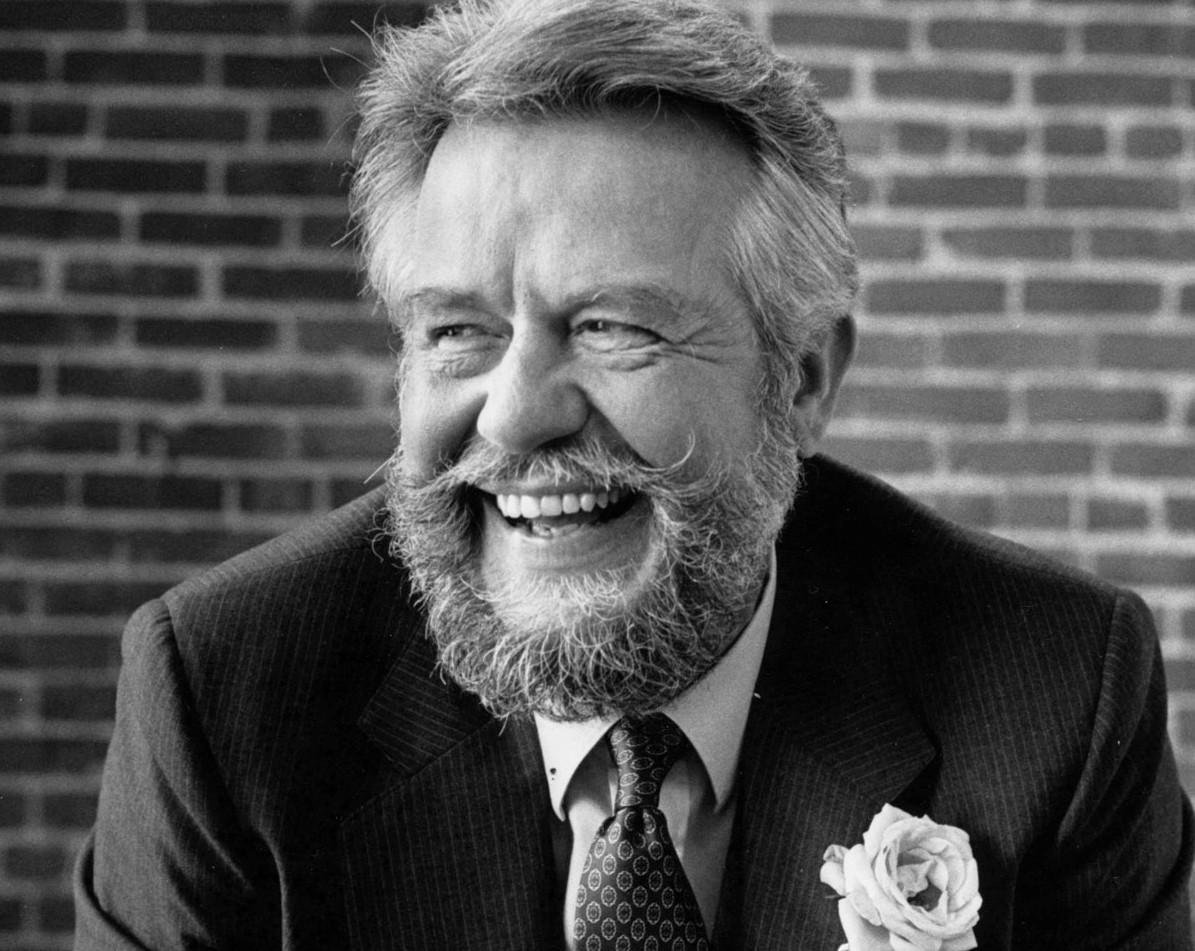
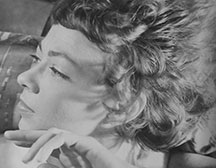
![Photo of Prof. Marvin Levich [philosophy 1953–94]](https://www.reed.edu/reed-magazine/in-memoriam/assets/images/2022/LTL-levich1.jpg)
![Photo of President Paul E. Bragdon [1971–88]](https://www.reed.edu/reed-magazine/in-memoriam/assets/images/2020/Bragdon.jpg)
![Photo of Prof. Edward Barton Segel [history 1973–2011]](https://www.reed.edu/reed-magazine/in-memoriam/assets/images/2020/Segel.jpg)
